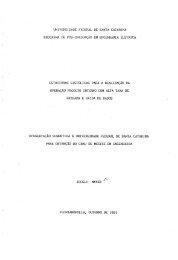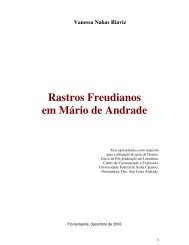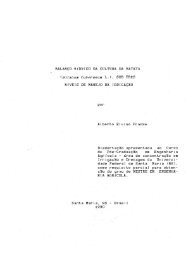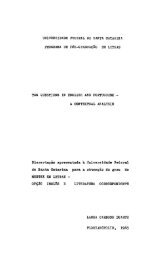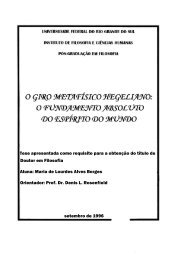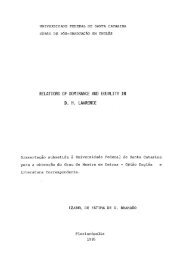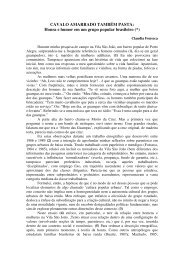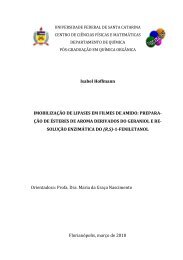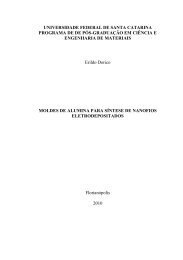T H E S I S
T H E S I S
T H E S I S
Create successful ePaper yourself
Turn your PDF publications into a flip-book with our unique Google optimized e-Paper software.
51<br />
sions then is Freud’s theory of the unconscious. It is too much<br />
for Lawrence that Freud goes into the impenetrable darkness of<br />
the unconscious and comes back with “repulsive little horrors’1<br />
of sex and its repressions. Lawrence’s argument is that by con-<br />
'sciously exploring the unconscious, Freud ’creates’1 the repressed<br />
’dirty secrets** that he finds there. In self-contradiction,<br />
Lawrence says that the repressed secrets should be kept in the<br />
unconscious, but he fights for sex fully and openly.<br />
Freud slowly developed his theories of the unconscious<br />
throughout his life. Very frequently, in each book, at the end<br />
of every chapter, he returned to the subject, confirming or reviewing<br />
previous ideas, with an outstanding accurateness and<br />
based on clinical cases. Nevertheless, Lawrence deliberately<br />
says: ’Freud’s unconscious amounts practically to no more than<br />
our repressed incest impulses®H(PAU 206) But Freud’s unconscious<br />
is not only this, for Freud points out<br />
“that mental processes are essentially unconscious, and<br />
that those which are conscious are merely isolated acts<br />
and parts of the whole psychic entity*”(GIP 25)<br />
On the other hand, ’repressed incest impulses” are only a small<br />
part of the mental excitations which, being originally unconscious,<br />
usually do not have admittance into consciousness. Freud<br />
remarked that mental organization was still a mystery and Law-<br />
/<br />
rence agrees with him when he finds the unconscious a mystery too*<br />
They differ in the way they approach the mystery:<br />
“We are trying to trace the unconscious to its source. And<br />
we find that this source, in all the higher organisms, is<br />
the first ovule cell from which an individual arises.”<br />
(PAH 213)



